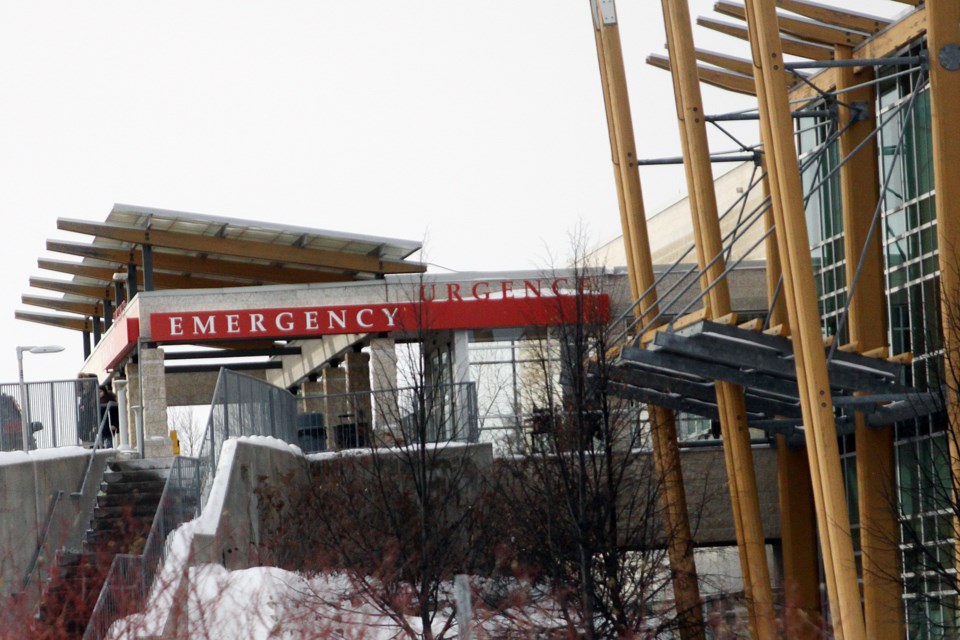THUNDER BAY - The Thunder Bay Regional Health Sciences Centre has expanded its COVID-19 unit to 49 beds as the number of hospitalizations continues to grow and further expansions to the unit and intensive care unit may be required.
There are currently 47 patients admitted to the hospital with COVID-19, with 13 in the intensive care unit. That is an increase of one patient from 46 on Wednesday though a decrease from the 14 in the ICU.
The TBRHSC’s COVID-19 unit is now at 49 beds and surge plans allow for further expansion, as well as increasing capacity for the ICU if needed.
"At any given time the ICU is managing other patients who need ICU care, not just our COVID positive patients," said Dr. Peter Voros, the COVID-19 incident management team lead with the TBRHSC. "We have plans in place to allow our ICU to expand to other areas of our hospital. We have three or four areas we can expand our ICU into. At any given time, the teams determine the best space to put someone in when we start to surge beyond the walls of the ICU."
The ICU at the hospital is a 22-bed unit and there are currently 19 patients in the ICU, 13 of which are COVID-19 positive.
"Over the last week, we have been incredibly busy and we have surged beyond the walls of the ICU," Voros said. "It fluctuates. Sometimes we have no patients in those other areas and I think we’ve gone as high as four patients in those other areas. This morning we had four patients in other areas but we’ve contracted back to just the ICU."
There is also a provincial protocol that can be used to divert patients to other hospitals in the province. According to Voros, one ICU patient was moved to a hospital in southern Ontario.
"The other thing the province does is they look at patients who are coming to us from the region and depending on the numbers we are dealing with, rather than coming here, they may direct that patient somewhere else in the province," he said. "They have done some redirection of patients outside of the region."
Voros said right now there are no plans of moving any other patients but it is evulated every day based on the situation at the hospital.
The overall capacity at the TBRHSC is now at 77 per cent. Elective procedures have been put on hold and the hospital is focusing on outpatient and emergent inpatient procedures to ensure capacity.
There is the possibility of expanding the dedicated COVID-19 unit even further if more patients are admitted.
"The hospital is a big place but we have to balance all of the other needs that exist for people who come in," Voros said.
"The first step would be to do an expansion of 24 beds and to do that we would work with community partners to move people who may not need our level of acute care, who might be waiting for other services in the community, to move them to those services. We work every day with our partners to make sure that flow is happening and that we have the flexibility to expand if we need to.
Vaccinations of high-risk health care workers is also continuing, with more doses of the COVID-19 vaccine delivered on Wednesday.
However, the hospital is also extending the time between first and second doses of the vaccine to 16 weeks as guided by the province and recommendations from the National Advisory Committee on Immunization.
Voros said most health care workers are excited about the opportunity that more people will be vaccinated more quickly rather than having to wait quite as long.
There are hopes that all frontline health care workers will have recevied the first dose of the COVID-19 vaccine in the next two weeks, but the exact number of how many people have been vaccinated is unclear because numbers are still being compiled by the Thunder Bay District Health Unit and the provincial COVID-19 vaccination data base has been experiencing technical difficulties.
"We know that between Thunder Bay Regional and St. Joe’s almost all of our employees have received codes to be vaccinated," Voros said. "Can’t say how many have come forward and been vaccinated. Once that provincial system gets up and running for us we will be able to see that information."
Voros added that there are less than 200 employees between the two facilities to receive vaccination codes and as long as vaccine shipments continue at current levels or increase, all health care workers should be vaccinated in the next two weeks.
"We are very hopeful by end of next week any employee who wants to be vaccinated between the two hospitals will be vaccinated, as well as our community very high health care workers and moderates ones as well," Voros said. "We are hopeful in the next couple of weeks if the vaccine supply continues the way it has, we will be able to get through all the health care workers."
And with the high number of COVID-19 cases in the district, the number of tests conducted at the assessment centre in the past two weeks has more than doubled.
An average of 400 tests are being conducted per day. In January the number of daily tests was 180, and in February the average was 240 per day.
Voros said the two assessment centres have the capacity to manage the increased demand. If it continues to go up, there is also the possibility of opening a third site.
"Within the two sites we have right now, we could do quite a bit more," he said. "The cap is really not there because if needed we would open a third site. The slowing point would be the public health lab, both here and in Toronto and the amount they can do in a day."
